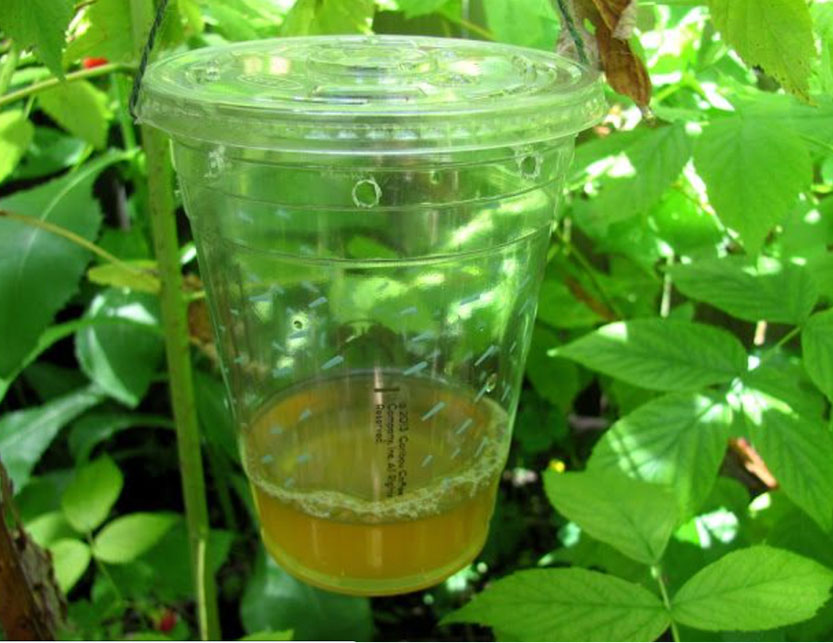Taking care of pests naturally
Being able to harvest and consume something that you have cultivated can be a very satisfying experience, so when a pest comes along and takes a share this can be disheartening.
When insects feed on plants that we as humans don’t want them to and cause damage they then become pests. Aphids, beetles, borer, flies, grasshoppers (dry season pests), nematodes, scale insects, slugs and snails are some of the pests found in inner city gardens, and let’s not forget the possum.
Pests have a role in the overall system of nature and are part of the diverse life on this planet. Everything created has a purpose. Pests are often an indicator of unbalance, which then calls for measures to control and cure – not eliminate.
Not all plant problems are caused by insects. Sometimes plants suffer from nutrient deficiency, which often manifests as foliage discoloration or distortion. Soil that is too wet can discolor foliage and cause wilting as well.
Regularly check your garden to keep across infestation levels. Allow a certain threshold for pests. Ask – how much damage is occurring? I.e. is it chewing (caterpillars, snails and slugs) or is it sucking (aphids, thrips, scale). Does it matter? Then discern to do nothing, take action or improve the habitat – for example red spider mites increase under conditions of heat and dryness so watering lightly will reduce the infestation.
Below are the Integrated Pest Management (IPM) strategies I use. Some may work for you depending on your garden size, what you are growing and the conditions on your site.
The best pest management cure is prevention. By understanding what attracts pests, how they operate and breed you can then confuse them, interrupt their breeding cycles and set up barriers.
Building a resilient balanced garden that encourages biodiversity and provides habitat is a good start. Mixed plantings encourage predatory species and perennial plants provide homes for beneficial insects to winter over in, such as hoverflies, lacewings and ladybirds that feed on aphids, leafhopper and mealy bugs. Inter-planting varieties of plants can reduce the incidence of pests by masking the plants’ colour, leaf shape and smell.
Plant aromatic herbs and companion plants with vegetables such as tansy, pennyroyal, rue, mint wormwood, rosemary, sage, lavender, basil, peppermint and southernwood. As insects are attracted mainly by smell, creating a diversity of plants with various smells you can deter pests from finding your productive vegetables. Using companion and guild planting will go a long way to ensure pests bypass. Apply appropriate water and mulch.
When your garden is busy with all sorts of life natural pest management is happening. Predators will work for you and carry out the valuable work of pollination and fertilisation of fruit and vegetables. They can live in windbreaks, living fences and insect hotels.
Larger predators such as insectivorous birds are a big help in the garden eating grubs, weevils, moths, larvaes and flies. To invite them in plant fruit trees and provide several types of water and remember small birds need dense small leaved shrubs for protection.
Keep plants as healthy as possible to reduce plant stress so plant them in the right place in the right season. Keep your soil fertile, better-quality soil means better produce with more nutrients and more resistance to pests.
Select strong locally grown species of plants. I mainly choose heritage and heirloom plants and organic vegie seedlings to plant and then collect seed from those whom perform best.
Placing fresh sawdust, sharp sand, soot, cinders or as a barrier around special plants of beds, deters snails and slugs. These barriers are abrasive and/or dehydrating. Put a collar such as a cut-off plastic milk carton around small seedlings outside until they are stronger – to deter cutworm and snails. Upturned citrus shells and beer are all good traps.
Lures and baits like milk, beer attracts slugs and snails. Yeasts sugars and proteins are bait for fruit fly. Put vinegar and sugar solution in traps and hang them in your trees – ensure neighbours are on board.
Net vegie beds when the cabbage moth starts appearing and start to visually look under the leaves for their eggs and caterpillars and remove them by hand. Factor in when the flowers of vegies have been pollinated. Other people use exclusion methods of paper bags on fruit.
Rotate crops to stop build-up of soil pests. Crop rotation helps break the pest cycle. Sometimes planting onions and garlic helps to clean the soil of the pests attracted by the previous crop.
Organic sprays work on insect anatomy and are usually a last resort measure because some of them will kill beneficial insects as well. I know people, who take the bugs they want to get rid of, mix them up in a blender and leave for one to two days to encourage pathogens then mix with water and spray.
Natural homemade sprays such as vegetable oil, soap, neem, chilli and pepper garlic weed brews and tomato leaf sprays are effective as repellents or insecticides. But do your homework, as they can be harmful. Click here for recipes and more information.
Then there is the possum … well that will have to wait for another day •

Jo Ryan unveils Ordered Chaos at Blender Studios






 Download the Latest Edition
Download the Latest Edition